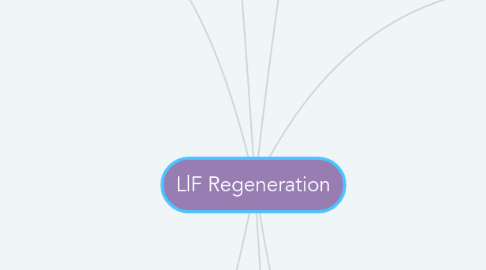
1. Stretch Goals
1.1. Define & achieve minimum standards and stretch goals by market
1.2. Benefits:
1.2.1. Deliver on our commitment
1.2.1.1. 2030 Challenge
1.2.2. Continue to stake out a leadership position
1.2.3. Innovate on exemplary projects
1.2.4. No project left behind
1.3. Obstacles:
1.3.1. Time
1.3.1.1. Research
1.3.1.2. Get buy-in
1.3.1.3. Agreement on standards and aspirations
1.4. Next steps:
1.4.1. Make a plan
1.4.2. Determine available resources
1.4.3. Identify, study a "reference ecosystem" for San Antonio
1.4.4. Review proposed standards and goals from Charrette
1.4.5. Determine process for supporting teams and enforcing minimum standards
1.4.5.1. Challenge each market sector to stretch beyond comfort zone on at least one project
1.4.5.2. Standardize pre- and post-occupancy evaluations across all metrics
1.4.5.3. Develop with client clear narrative/values/goals for each project (OPR)
1.4.5.3.1. Consider a "low-performance fee" cost premium for clients/projects that don't support high performance
2. The Watershed (L|F think tank)
2.1. Strategic advocacy and community engagement
2.2. Benefits:
2.2.1. A better place to live
2.2.2. More impact on local/regional/state policies (change the context that limits what we can achieve on projects)
2.3. Obstacles:
2.3.1. Time
2.3.2. Know-how
2.4. Next steps:
2.4.1. Assign/allocate a coordinator to work across existing programs (1%, R&D, individual volunteerism)
2.4.2. Survey the firm to identify areas of activity, interest
2.4.3. Align outreach with marketing/communications
2.4.4. Develop a plan to focus on one or two opportunities at a time
3. Building the Team
3.1. Enhancing firm capabilities through strategic hires, preferred consultants, and peer networks
3.2. Benefits:
3.2.1. Improved project outcomes
3.2.2. Clarity about potential solutions earlier in project
3.3. Obstacles:
3.3.1. Time
3.4. Next steps:
3.4.1. Identify needs & opportunities
3.4.2. Make case for hiring where appropriate
3.4.3. Finish database of preferred consultants
3.4.3.1. Roll it out to the firm
3.4.3.2. Keep it alive with ongoing updates
3.4.3.3. Assign this to the Champions Network?
3.4.4. Establish stable of pre-approved consultants who can be paid for advice/direction with minimal red tape
3.4.4.1. Authorize an overall budget for this
3.4.4.2. Assign a gatekeeper (or one per studio?) to authorize engagements on short notice
3.4.5. Explore idea of convening peer networks like Sustainable Design Leaders for other roles in the firm
3.4.5.1. Marketing
3.4.5.2. Project managers
3.4.5.3. Small group of peer firms that network with people in parallel roles?
4. Live the Dream (office improvement)
4.1. Remodel or relocate to make our office into a showcase
4.2. Benefits:
4.2.1. More productive, healthy, happy staff
4.2.1.1. Better air quality = improved cognitive functioning
4.2.1.2. Better facilities improve workflow
4.2.2. Impress prospective clients
4.2.3. First-hand experience with advanced technologies & systems & certifications
4.2.3.1. Can make more informed recommendations to clients
4.2.3.2. Better implementation
4.2.3.3. Office-wide learning raises confidence to advocate for advanced practices
4.2.4. Reduce impact of operations
4.3. Obstacles:
4.3.1. Cost
4.3.2. Time
4.3.3. Ownership
4.4. Next steps:
4.4.1. Treat ourselves as a client
4.4.2. Determine what firm needs to commit
4.4.3. Assign people to project team
4.4.3.1. Client team
4.4.3.2. Designer team
4.4.4. Plan charrette??
4.4.5. Feasibility study?? Needs assessment??
5. Process Sexification
5.1. Automate and streamline processes from pre-design studies through to fabrication
5.2. Benefits:
5.2.1. Free up time to do everything
5.2.2. Control quality
5.2.3. Enhance value of design deliverables by understanding constructability
5.2.4. Reduce time spent on dull, repetitive tasks
5.2.5. Stay abreast of CAD/CAM technology advances
5.2.5.1. parametric modeling
5.2.5.2. 3D printing
5.3. Obstacles:
5.3.1. Time, resources to learn/develop technology & automation solutions
5.3.2. Need some outside expertise
5.4. Next steps:
5.4.1. Identify contractor to partner with
5.4.1.1. co-locate?
5.4.2. Document examples of successes we're already having
5.4.3. Explore what other leading firms are doing
6. Text "Book"
6.1. Publish about what we do and how we do it
6.1.1. online
6.1.2. textbook
6.2. Benefits:
6.2.1. Help others (other firms, students) make their projects better for society & the planet
6.2.2. Inculturation: Codify what's special about our approach for consistency across our practice
6.2.3. Build our brand nationally/internationally
6.3. Obstacles:
6.3.1. Time
6.3.2. Writing capabilities
